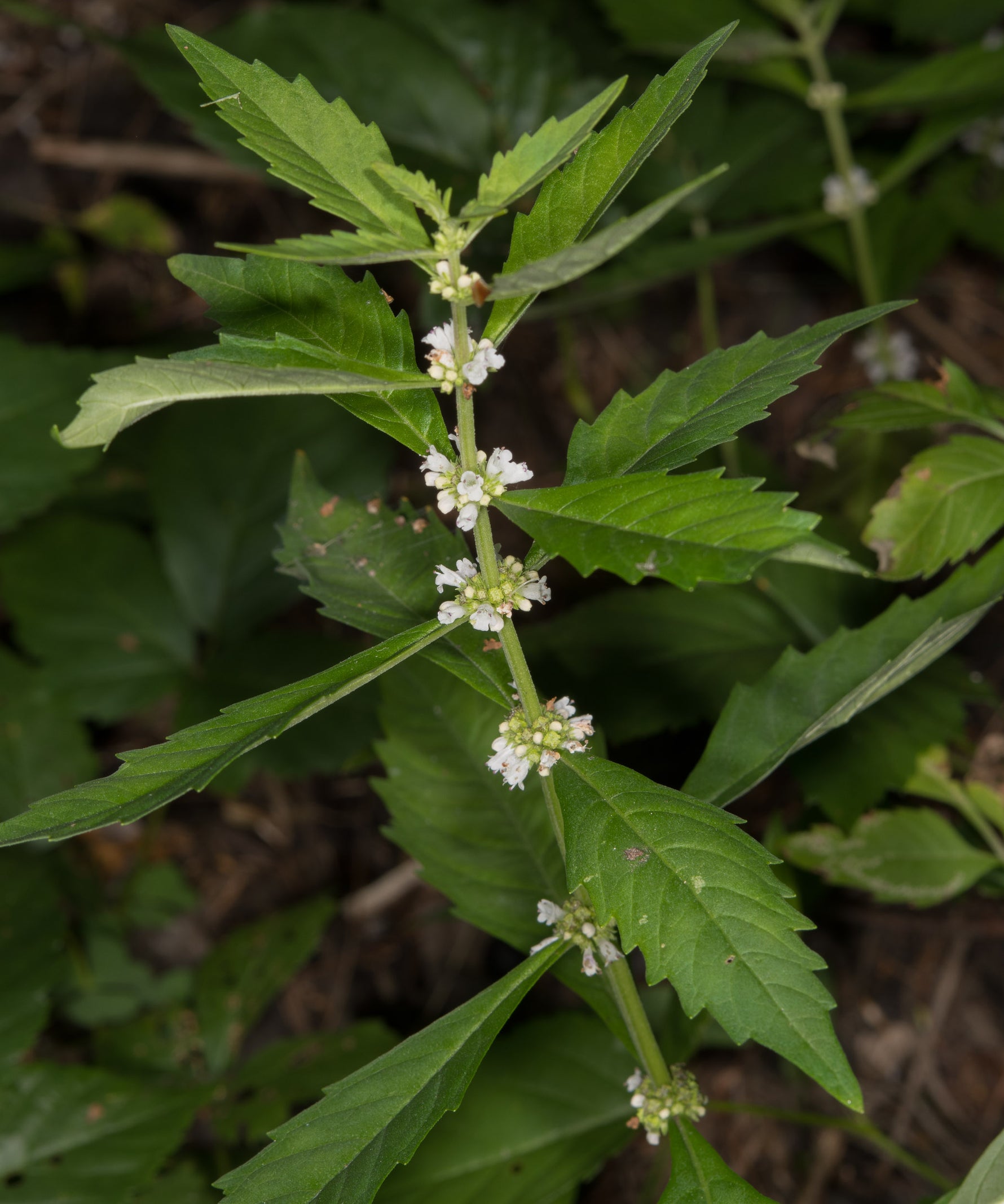
Dharaseeds
Water Horehound
Estimated delivery between February 04 and February 07.
Water Horehound (Ballota nigra) is a hardy perennial herb known for its medicinal properties and ability to thrive in damp environments. Often used in traditional medicine for its soothing effects, this herb grows well in wet, marshy areas and is a great addition to any garden looking for a unique and useful plant. With its aromatic, gray-green leaves and small, mint-like flowers, Water Horehound offers both practical and aesthetic value to the garden.
Key Benefits
- Medicinal Uses: Traditionally used for respiratory health, Water Horehound is known for its soothing effects on the throat and lungs. It has been used to treat coughs, colds, and bronchitis.
- Pollinator-Friendly: The small, tubular flowers of Water Horehound attract bees and butterflies, helping support a healthy garden ecosystem.
- Adaptable: Water Horehound thrives in moist, damp soil, making it ideal for low-lying or wetter garden spots.
- Easy to Grow: This plant is relatively low-maintenance, requiring minimal attention once established in a suitable environment.
- Aromatic Foliage: The gray-green leaves have a pleasant scent, especially when crushed, and can be used in herbal remedies or as a mild flavoring for culinary dishes.
Plant Features
- Plant Characteristics: Water Horehound has fuzzy, gray-green leaves with a soft, woolly texture. It produces small, tubular flowers that range in color from pale pink to white, appearing in late spring to early summer.
- Size: Typically grows 12–18 inches (30–45 cm) tall and can spread up to 24 inches (60 cm) wide.
- Growth Habit: This plant grows in a compact, bushy clump, and its spread is encouraged in damp soil conditions. It can also tolerate light shade but will thrive in full sun with plenty of moisture.
Planting Instructions
Planting Season
- Water Horehound is best planted in the spring after the danger of frost has passed. It can also be sown in late summer for a fall harvest, especially in milder climates.
Planting Details
- Planting Depth: Sow seeds about 1/8 inch deep.
- Spacing: Space plants 12–18 inches apart to allow for their spreading habit.
- Soil Requirements: Prefers moist, well-drained soil but can tolerate heavier, damp conditions. The pH should be slightly acidic to neutral (6.0–7.0).
- Sunlight: Grows best in full sun but can tolerate partial shade. The key requirement is moisture, so it should be planted in a location that retains water.
Care Instructions
- Watering: Water Horehound thrives in consistently moist soil. It’s ideal for planting near ponds, streams, or in boggy areas where the soil remains wet.
- Fertilization: It does not require heavy fertilization, but a light application of balanced fertilizer in early spring can promote healthy growth.
- Weeding and Mulching: Mulch around the base to retain moisture and suppress weed growth. Make sure not to cover the crown of the plant when mulching.
- Pruning: Cut back any dead or diseased growth in early spring to encourage fresh, healthy growth. You can also deadhead the flowers to encourage additional blooming.
- Pest and Disease Control: Water Horehound is generally resistant to pests but should be monitored for aphids or fungal issues, especially in humid conditions. Regular inspection and maintenance will keep the plant healthy.
Harvesting
- Maturity: Water Horehound reaches maturity within its first year of growth, typically producing flowers by mid to late summer.
- Harvesting Method: Harvest the leaves when they are mature, usually in late spring or early summer. Cut stems just above the ground and remove the leaves for drying. The flowers can also be harvested when in full bloom for medicinal or decorative purposes.
Storage
- Short-Term: Fresh leaves can be stored in the refrigerator for up to a week. For longer storage, they can be dried or frozen.
- Long-Term: To dry, hang the stems upside down in a warm, dry area away from sunlight. Once dried, store the leaves in an airtight container for long-term use.
Culinary Uses
- Herbal Teas: The leaves of Water Horehound can be used to make soothing herbal teas, which are traditionally used to ease respiratory issues and calm coughs.
- Flavoring: The leaves can be used sparingly in culinary dishes, adding a mint-like flavor to salads or sauces, or even as a garnish.
Medicinal Uses
- Respiratory Aid: Water Horehound has been traditionally used to relieve coughs, colds, and other respiratory ailments. It is often made into syrups or teas.
- Digestive Aid: It has mild digestive properties, helping to soothe the stomach and alleviate symptoms of indigestion.
- Anti-inflammatory: Water Horehound is sometimes used in topical treatments to relieve skin irritation or inflammation.
Conclusion
Water Horehound is a versatile, low-maintenance perennial herb with a variety of uses, from medicinal to ornamental. Whether you are seeking a plant for its health benefits, to attract pollinators, or to add texture and aroma to your garden, this hardy herb offers a wealth of advantages. With its adaptability to wet soils and its unique, attractive flowers, Water Horehound is a valuable addition to any garden.









